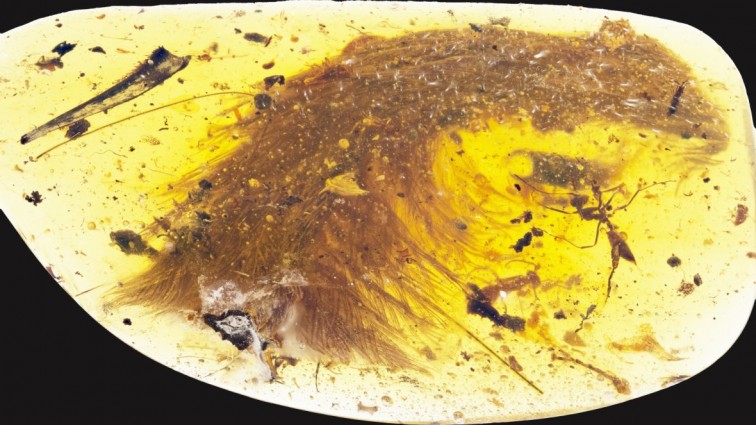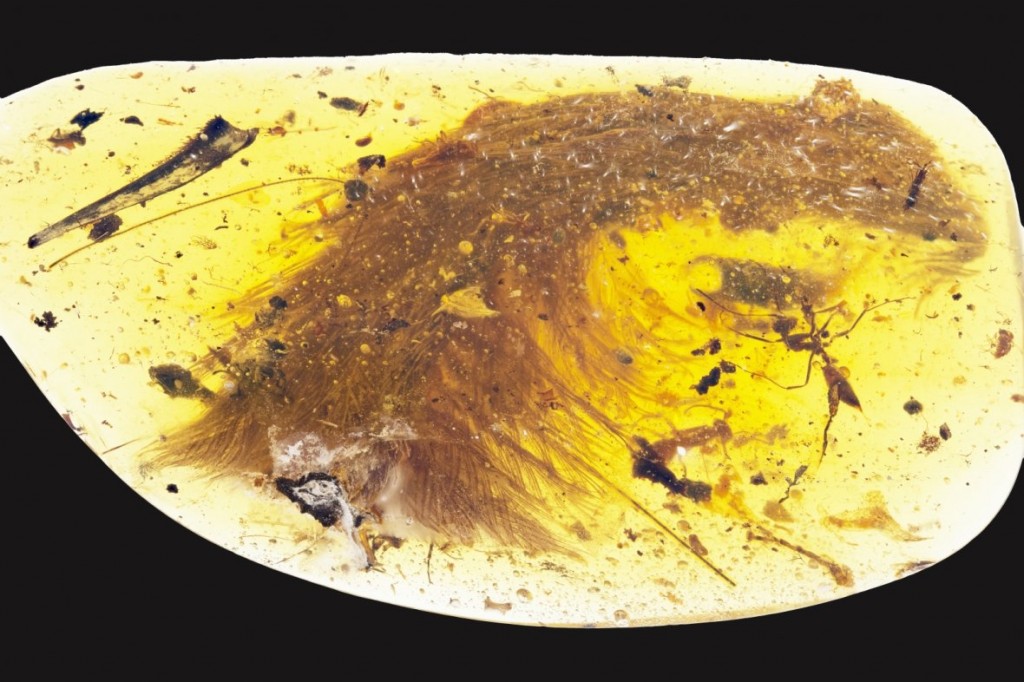Dinosaur tail complete with feathers trapped in amber discovered at Myanmar marketplace

A piece of amber containing a dinosaur tail covered in feathers has been discovered at a marketplace in Myanmar, where it was destined to become a piece of jewellery or a curiosity. The dinosaur is believed to have been a juvenile non-flying dinosaur that lived 99 million years ago.
The piece of amber, which is no bigger than the palm of your hand, has provided scientists with a microscopic view of the feather structure – helping them understand how feathers evolved and providing a better insight into their appearance.
The amber casing perfectly preserved the dinosaur tail. Its clarity meant scientists were able to get a microscopic view of its structure. They have published their findings in the journal Current Biology.
First author Lida Xing, from the China University of Geosciences, noticed the piece of amber at the market and suggested buying it. After studying it more detail with CT scanning and microscopic observations, he and his team realised it was a coelurosaur tail complete with feathers.
"The new material preserves a tail consisting of eight vertebrae from a juvenile; these are surrounded by feathers that are preserved in 3D and with microscopic detail," said Ryan McKellar, from the Royal Saskatchewan Museum in Canada.
"We can be sure of the source because the vertebrae are not fused into a rod or pygostyle as in modern birds and their closest relatives. Instead, the tail is long and flexible, with keels of feathers running down each side." In other words, the feathers definitely are those of a dinosaur not a prehistoric bird."
Analysis showed the feathers had a chestnut brown surface and a white or very pale underside. Discussing what had happened to the dinosaur, the team wrote: "The close contact between the skin and surrounding amber, paired with the mummified external appearance of the skin where it has shrivelled across the surface of the vertebrae, suggest one of two scenarios. Either the tail bearer was dead and partially desiccated before encapsulation, or else it rapidly dried due to resin interactions."
Of the evolution of feathers, the researchers said the discovery shows several things. The lack of a well-developed central shaft – or rachis. This suggests the two finest tiers of branching seen in modern feathers emerged before rachis formed.
"The theropod tail reported here is an astonishing fossil, highlighting the unique preservation potential of amber," the team wrote. "Importantly, in the context of bird origins, feathers and flight are key elements contributing to the success of the clade. Recent finds from Asia have revealed unexpected diversity in feather morphologies and flight modes among the proliferation of small Jurassic-Cretaceous theropods near the origin of birds with powered flight.
"With preservation in amber, the finest details of feathers are visible in three dimensions, providing concrete evidence for feather morphologies and arrangement upon the tail, as well as supporting an important role for barbs and barbules in feather evolution."
The scientists said they are looking forward to finding out how more specimens from the region "will reshape our understanding of plumage and soft tissues in dinosaurs and other vertebrates".
Политика конфиденциальности | Правила пользования сайтом








